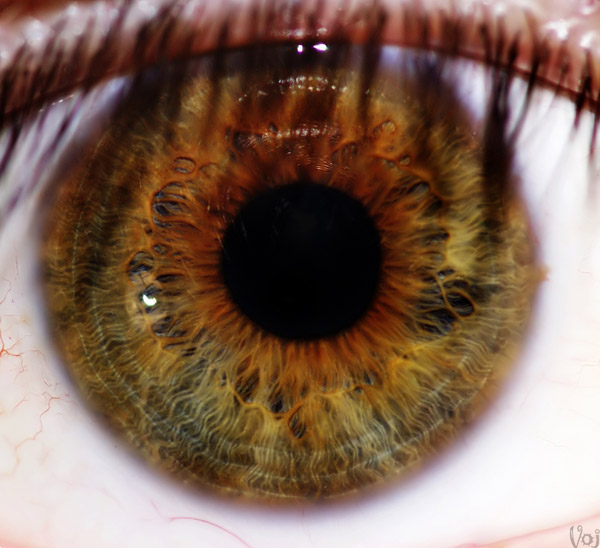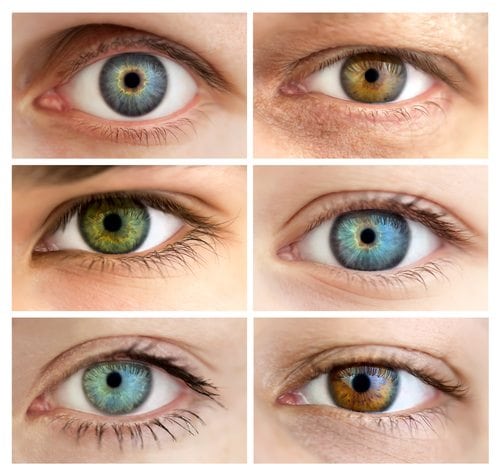
Some of the most common factors that are responsible for changing hazelnut eye color are: Unlike brown and blue eyes, hazelnut eye color is vastly influenced by numerous factors. Factors that Affect the Hazel Colored Eyes That is why the amount and distribution of melanin in the hazel eyes that cause a varied amount of light absorption and scattering gives rise to hazelnut eye color. On contrary, the iris area towards the periphery with less melanin concentration absorbs less light and scatters more amount of light, resulting in blue or green color. The iris margin towards the pupil with a higher concentration of melanin absorbs more amount of light and scatters less light, giving the characteristic brown or golden appearance. Here lies the mystery of hazel eyes or hazelnut color eyes. But, the uneven or patchy dispersion of color pigment leads to uneven absorption and scattering of light by the melanin. When the iris possesses an even distribution of melanin, the uniform light absorption and scattering happens, resulting in uniform eye colors are seen such as brown, blue, or green eyes. Absorption and Scattering of Light Responsible for Hazel EyesĪlthough the amount of melanin pigment is a key player that is responsible for eye color, another important factor related to melanin is the absorption and scattering of light. Likewise, African, Asian, or Hispanic babies that are born with more melanin pigments have brown eyes, and later with an increased quantity of melanin will have dark brown eyes. The Caucasian babies with blue eyes at the time of birth will possess green or hazel eyes later due to the accumulation and distribution of more melanin pigment in the iris. It is found that the newborn has a lesser amount of melanin in the iris, which goes on to increase within a few months of birth. Those who acquire the higher quantity of melanin pigment in the iris have brown eyes, those who have a lower quantity of melanin have blue eyes, and those with a moderate amount of melanin that is not evenly distributed in the colored part of the eye or iris possess hazel eyes.

But in reality, that’s not the case.Īlthough the mystery of eye colors in human beings is still not clear, it is confirmed that not only the genes, other factors are also responsible for eye colors, the main factor among them is the melanin pigment, its distribution, and density in the iris of the eye. Likewise, the baby of parents with blue eyes should hold chances of having blue eyes only. According to the law of genetics, kids of both parents with brown eyes should have brown eyes only, with no chances of having other colored eyes, such as blue, green, grey, or hazel. It means the normal law of genetics that was believed before is a complete failure. Later, it was found that not only two but as many as 16 different genes contribute to eye colors. These two genes that were supposed to create eye colors were the gene for brown color or the dominant gene, and the gene responsible for blue color or the recessive gene.īut with advancement in science, new discoveries have failed those old beliefs regarding eye colors.

Scientists used to believe that only two genes are responsible for eye colors. Hazelnut eyes color is commonly found in Caucasian people as there is a mix of the population with blue eyes, green eyes, and brown eyes. The majority of the eye colors are dominated by the brown color that accounts for around 80 percent of the total population.Īlthough fewer incidences of hazel eyes are seen around the world, they are most common in the population of Spanish, Middle Eastern, Brazilian, and North African origin. Some people believe that the rarest eye color is grey eyes color as it is noticed in only 1 percent of the total global population. The rarest eye color or the green eyes accounts for only 2 percent of the eye colors whereas the blue eyes are found in 8-10 percent of the global population.

Around 5 percent of the world population has hazel eyes. The hazel eye color is not as rarer as the green eyes (the rarest eye color) but is rarer than blue eyes. How Rare are Hazel Eyes or Hazelnut Color Eye?Īfter knowing a little bit about hazel eye color, you might be interested to know a bit more about how common or rare hazel eyes are, and people of which part of the world have these beautiful eye colors.


 0 kommentar(er)
0 kommentar(er)
